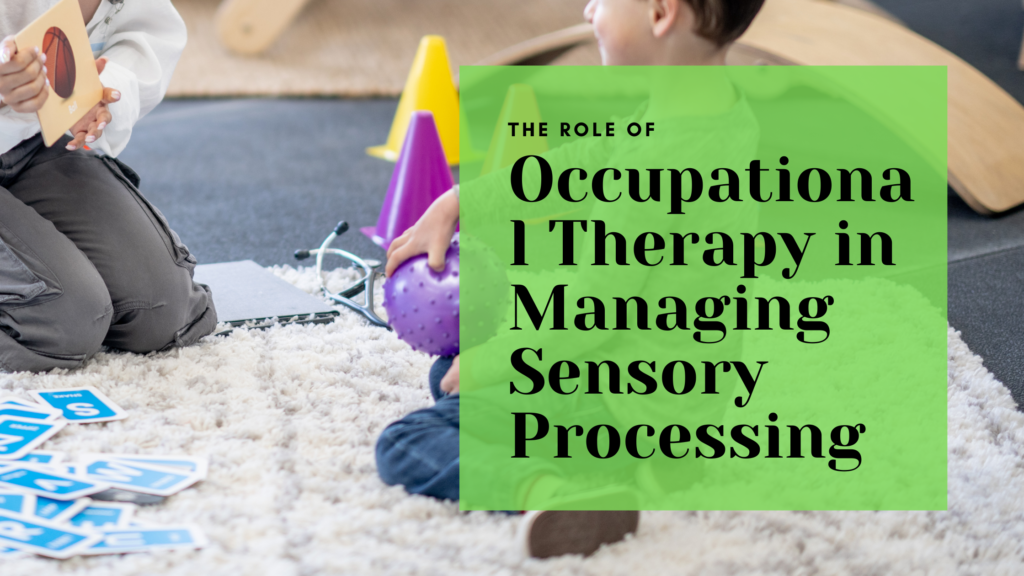I. Introduction
Sensory rooms are specially designed spaces that help individuals with sensory processing challenges, particularly those with autism, manage sensory input. These rooms have become increasingly popular in autism therapy because they provide a controlled environment where individuals can explore sensory stimuli at their own pace. Sensory rooms are used to either calm or stimulate the senses, helping individuals regulate their emotions and behavior.
This article will explore the role of sensory rooms in autism therapy, focusing on their benefits, how they are used in therapy, and what key elements make them effective. We will also discuss how caregivers and therapists can use sensory rooms to help individuals with autism manage their sensory needs.
II. What is a Sensory Room?
A sensory room is a carefully designed space that offers various sensory inputs to help individuals manage their sensory processing challenges. These rooms provide a safe environment where individuals can either calm down or stimulate their senses, depending on their needs. Sensory rooms are often used for relaxation, sensory exploration, and emotional regulation.
In sensory rooms, autistic individuals can engage with a variety of stimuli, including tactile (touch), auditory (sound), visual (sight), and proprioceptive (body awareness) inputs. For example, a sensory room might include soft textures for tactile stimulation, calming music for auditory input, and gentle lighting for visual relaxation. These rooms allow individuals to explore and manage their sensory input in a controlled setting, helping them develop better self-regulation.
III. The Importance of Sensory Rooms in Autism Therapy
Sensory rooms play a critical role in autism therapy because they directly address sensory processing issues that many individuals with autism experience. These rooms help manage overstimulation by providing a calm space where individuals can reduce sensory input. Alternatively, they help with sensory-seeking behaviors by providing stimulating activities like swings or bright lights that meet the individual’s need for more intense sensory input.
By offering a structured and controlled environment, sensory rooms help individuals with autism regulate their sensory input, reducing anxiety, preventing meltdowns, and promoting emotional control. The ability to take sensory breaks in these rooms is essential for maintaining balance and preventing sensory overload during therapy or daily activities.
IV. Key Elements of an Effective Sensory Room
A successful sensory room includes a variety of sensory inputs to meet the needs of individuals with different sensory profiles. Here are some of the key elements:
Tactile Stimulation
Tactile stimulation helps engage the sense of touch. Sensory rooms often include textured walls, sensory toys, and soft surfaces like bean bags or pillows. These objects allow individuals to explore different textures, helping them manage tactile sensitivities or satisfy their need for tactile input.
Visual Stimulation
Visual elements in sensory rooms can be both calming and stimulating. Items like bubble tubes, fiber optics, color-changing lights, and projected images create gentle visual stimuli that can soothe or engage individuals, depending on their needs. The use of dim, adjustable lighting also helps create a peaceful atmosphere.
Auditory Stimulation
Sound is another important element of a sensory room. White noise machines, calming music, and nature sounds are often used to create a relaxing auditory environment. These sounds can block out distracting background noise and provide a calming effect, helping individuals focus and feel more comfortable.
Proprioceptive and Vestibular Stimulation
Proprioception refers to body awareness, while the vestibular system controls balance and movement. Items like swings, balance boards, and weighted blankets are commonly included in sensory rooms to help individuals regulate their body awareness and movement. These tools provide the necessary input to satisfy sensory-seeking behaviors or help individuals feel more grounded.
Olfactory Stimulation
Some sensory rooms include calming scents like lavender or chamomile to create a multi-sensory calming experience. However, it’s important to note that olfactory stimulation should be used carefully, as some individuals with autism may be sensitive to strong smells.
V. Benefits of Sensory Rooms for Individuals with Autism
Promotes Calm and Relaxation
Sensory rooms offer a quiet and safe space where individuals can take a break from overwhelming stimuli. This helps reduce stress and anxiety, making it easier for them to relax and regain control of their emotions.
Encourages Sensory Exploration
In sensory rooms, individuals can explore different textures, sounds, and visuals at their own pace. This supports sensory integration, helping them better understand and process sensory information.
Improves Focus and Attention
Time spent in a sensory room can improve focus and attention. By allowing individuals to regulate their sensory input, they can feel more prepared and ready for other therapy sessions or learning activities.
Supports Emotional Regulation
Sensory rooms teach individuals self-regulation techniques by helping them identify which stimuli help them relax or focus. This self-awareness helps individuals manage their emotions more effectively.
Enhances Communication
Sensory rooms can also improve communication, especially for non-verbal autistic individuals. Reducing sensory barriers in a calm environment can help individuals engage more fully, making it easier for them to communicate their needs and feelings.
VI. How Sensory Rooms are Used in Autism Therapy
Individual Therapy Sessions
In one-on-one therapy sessions, therapists can use sensory rooms to work on specific goals such as sensory integration or emotional regulation. For example, a therapist might help an individual become more comfortable with certain textures by gradually introducing them in a sensory room.
Group Therapy and Social Skills
Sensory rooms can also be used in group settings to promote social interaction. Group activities like turn-taking or cooperative play can take place in a sensory room, providing a comfortable environment for practicing social skills.
Sensory Breaks
Sensory rooms provide essential sensory breaks throughout the day. These breaks help individuals manage stress, prevent sensory overload, and recharge before continuing with their therapy or daily tasks.
Pre- or Post-Therapy Calm Down
Sensory rooms are often used before or after therapy sessions to help individuals calm down or prepare for more structured activities. Spending time in a sensory room before a therapy session can help reduce anxiety, while using the room afterward can help the individual unwind and process the therapy session.
VII. Designing a Sensory Room for Autism Therapy
Customizing for Individual Needs
Each individual with autism has a unique sensory profile, meaning that their sensory room should be tailored to their specific needs. For example, some individuals may need more calming elements like dim lighting, while others may benefit from stimulating activities like swings and bright lights.
Balancing Stimulating and Calming Features
An effective sensory room includes a balance of both stimulating and calming features. This allows individuals to either wind down or engage with sensory activities depending on their mood and needs.
Safety Considerations
Safety is a top priority when designing a sensory room. All equipment should be well-secured, and soft surfaces should be used to ensure that the room is safe for individuals who may have limited body awareness or experience meltdowns.
Adaptability
A good sensory room is adaptable to changing needs. Adjustable lighting, sound levels, and textures allow the room to be customized based on the individual’s preferences at any given time.
VIII. The Role of Caregivers and Therapists in Sensory Room Use
Caregivers and therapists play a crucial role in guiding the individual’s interaction with the sensory room. They can observe how the individual responds to different stimuli and adjust the room accordingly. Caregivers can also set up smaller sensory spaces at home, making sensory therapy more accessible outside of formal therapy sessions.
Communication Between Therapists and Caregivers
It’s essential for therapists and caregivers to communicate regularly about the individual’s progress. This ensures that the sensory room is being used effectively both in therapy and at home.
IX. Case Studies and Success Stories
Many individuals with autism have benefited from using sensory rooms as part of their therapy. For example, children who previously experienced frequent meltdowns in school settings have learned to regulate their emotions using sensory rooms. Therapists and caregivers often report improvements in emotional regulation, sensory processing, and communication after consistent use of sensory rooms.
X. Conclusion
Sensory rooms are an important tool in autism therapy, providing a safe and structured environment for individuals to manage their sensory processing challenges. These rooms promote calm, improve sensory integration, and support emotional regulation. By incorporating sensory rooms into a comprehensive therapy program, caregivers and therapists can help individuals with autism achieve greater emotional control and sensory balance.
Parents, caregivers, and therapists are encouraged to explore the use of sensory rooms to support their child or client’s therapy and sensory needs. With proper use, sensory rooms can make a significant difference in the well-being and development of individuals with autism.
Here’s a table with 10 key points based on the article:
| # | Key Point | Description |
|---|---|---|
| 1 | Understand the Purpose of Sensory Rooms | Sensory rooms provide a controlled environment that helps autistic individuals manage sensory input, reduce anxiety, and enhance therapy outcomes. |
| 2 | Address Sensory Processing Challenges | Sensory rooms help address sensory processing issues by offering stimuli that calm or engage the senses in a safe, structured way. |
| 3 | Include a Variety of Sensory Inputs | Ensure the sensory room contains a mix of tactile, visual, auditory, and proprioceptive stimuli to engage all senses. |
| 4 | Promote Self-Regulation | Sensory rooms help autistic individuals learn how to regulate their emotions and manage stress through sensory exploration. |
| 5 | Customize the Sensory Room to Individual Needs | Tailor sensory room activities and tools to meet the specific sensory profile of the individual, whether they are sensory-seeking or sensory-avoiding. |
| 6 | Use Sensory Rooms for Therapy and Relaxation | Sensory rooms can be used during therapy sessions to focus on sensory integration or simply as a calming space to help individuals unwind. |
| 7 | Create a Balance Between Stimulating and Calming Features | Ensure the room has both stimulating activities (e.g., swings) and calming features (e.g., soft lighting) to meet diverse needs. |
| 8 | Incorporate Sensory Rooms in Daily Routines | Regular use of sensory rooms can help improve focus, emotional regulation, and behavior by offering scheduled sensory breaks. |
| 9 | Work with Therapists and Caregivers | Collaborate with occupational therapists and caregivers to maximize the effectiveness of sensory rooms as part of a comprehensive therapy plan. |
| 10 | Ensure Safety and Adaptability | Prioritize safety by using soft surfaces and secure equipment, and create an adaptable space that can change as the individual’s needs evolve. |
This table outlines the key points to consider when using sensory rooms in autism therapy, providing a structured approach to designing and utilizing these spaces effectively.


